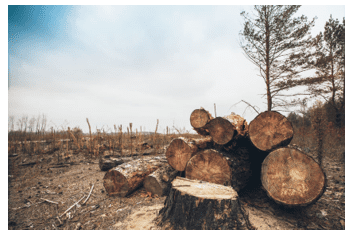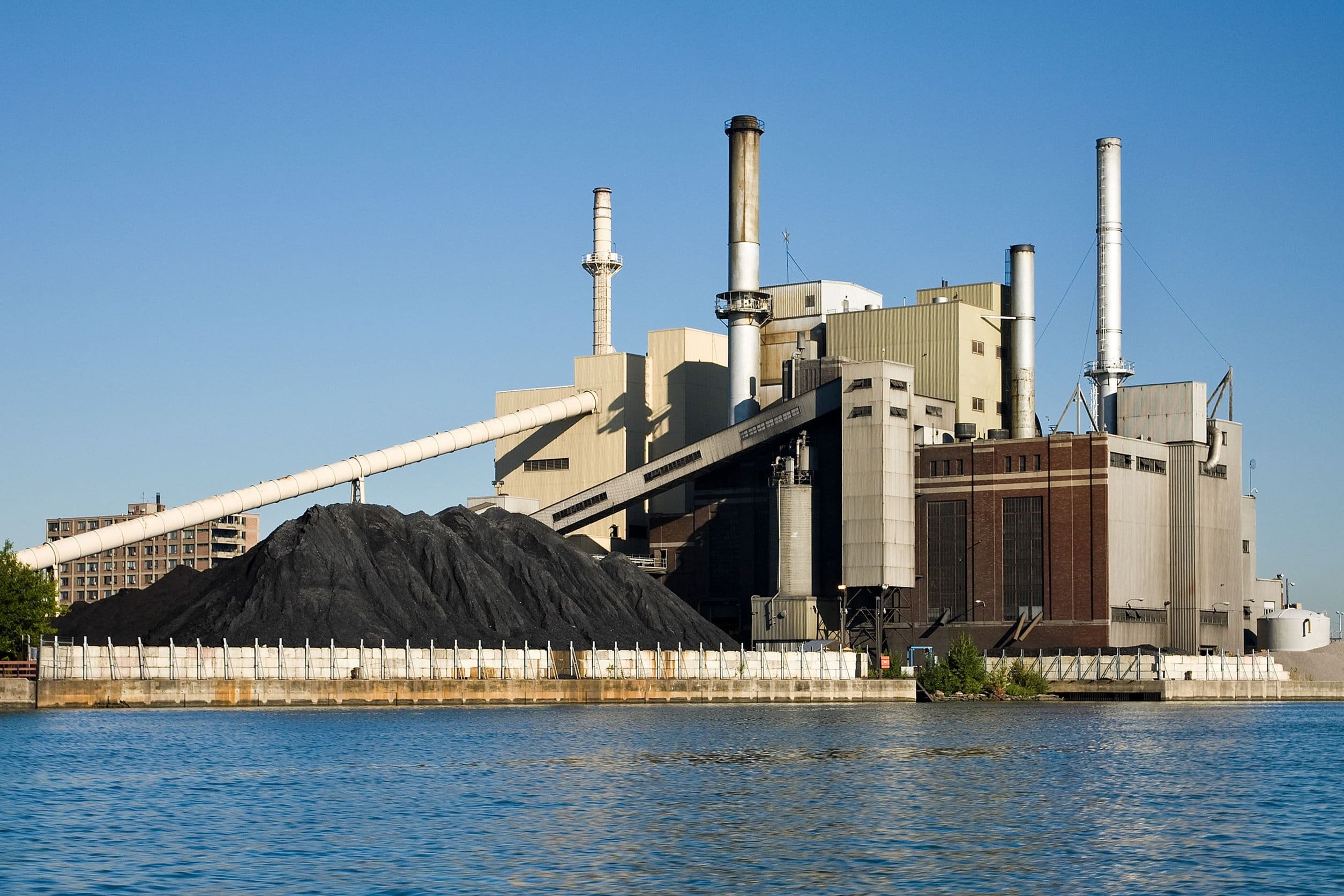In this post
Sulphur dioxide
Fossil fuels such as coal and oil sometimes contain sulphur impurities. When these fuels undergo combustion with the oxygen in air, the pollutant gas sulphur dioxide is released.
If it is released into the atmosphere, sulphur dioxide dissolves into the water in the rain clouds to produce sulphurous and sulphuric acid creating acid rain. The biological consequences of acid rain falling to Earth include:
- Acidification of lakes and rivers. This can kill the plants and animals living in these ecosystems. Any consumers which feed on these will also start to decrease in numbers due to the lack of availability of food.
- Habitats such as forests would be affected as the acid rain falling on the trees and plants causes damage to the leaves preventing them from photosynthesising. The acid rain can also release toxic substances from the soil which makes it hard for plants to take up the nutrients needed for growth.
- Corrosion of buildings and statues made of softer rocks such as limestone
Carbon monoxide
Carbon monoxide is a toxic gas which is produced from the incomplete combustion of hydrocarbon fuels. Carbon monoxide is toxic, as when it is inhaled, the gas diffuses into the blood and binds to the haemoglobin in the red blood cells. Haemoglobin is a protein which normally binds to and carries oxygen around the body to the cells where it is needed for respiration.
Carbon monoxide binds irreversibly to the haemoglobin which reduces the capacity of the haemoglobin to bind to and carry the oxygen around the body. The body cells suffer a lack of oxygen and are not able to respire. If the exposure to carbon monoxide is excessive enough, there will be a severe lack of oxygen in the body leading to tiredness, unconsciousness or even death.
Greenhouse gases
Infrared radiation emitted from the Sun passes through the atmosphere. When it reaches the Earth’s surface, it is bounced off and is radiated back out into space. Greenhouse gases are found in the Earth’s atmosphere and absorb the infrared radiation which bounces off the Earth’s surface. This is known as the greenhouse effect and it is necessary to maintain a temperature which is suitable to sustain life on Earth.
If the amounts of these greenhouse gases increase, the amount of infrared radiation absorbed also increases, leading to an enhanced greenhouse effect. The enhanced greenhouse effect may cause global warming where the average temperature of the Earth increases, resulting in climate change and rising sea levels.
A rise in the sea levels can result in the flooding of low-lying areas and therefore loss of habitat and reduction in the biodiversity of the ecosystems. Climate change can result in changes in the temperatures and patterns of rainfall or weather. These changes may cause changes to the ecosystems which enhances the habitats of some animals and causes others to disappear. The changes in weather patterns may also result in seasonal changes and consequential changes to the migratory patterns of some animals and birds. The greenhouse gases and the human activities which contribute to their production are shown in the following table:
| Greenhouse gas | Human activities producing the greenhouse gas |
| Water vapour | Combustion of fossil fuels |
| Carbon dioxide | Combustion of fossil fuels and deforestation |
| Nitrous oxide | Use of fertilisers, burning of diesel and petrol in vehicle engines |
| Methane | Cattle farming, rotting of vegetation, growing rice in paddy fields |
| CFCs | Man-made chemicals which were released by older refrigerators and aerosol sprays |
Water pollution by sewage
Raw sewage contains ammonia which can be converted into nitrates. If this raw sewage pollutes water courses such as rivers, lakes or streams the nitrates and other nutrients contained in the sewage can allow algae in the water to grow. If excessive amounts of nitrate-based fertilisers are used and it then rains, the excess will dissolve into the rainwater and will run off the fields into rivers and streams passing by the fields.
The result of this leaching of minerals from the soil into the water is eutrophication where the amount of nutrients such as nitrates in the water increases to excessive amounts leading to a sudden growth in algae in the water.
This algal growth occurs on the surface of the water and prevents sunlight from getting through to the green plants growing in the water. The green plants are no longer able to photosynthesise and produce oxygen. Without oxygen in the water, the fish living in the water die and all other organisms which feed on the fish will die due to the lack of food available.
The dead organisms fall to the bottom of the water where they are decomposed by microorganisms. With a plentiful supply of nutrients available, the microorganisms can reproduce. As these microorganisms respire aerobically the increase in their population uses up the oxygen supplies in the water.
Deforestation and its effects
Deforestation is the destruction of a large area of trees where no trees are planted to replace those removed. This may be done to clear the land for farming or to obtain large amounts of timber. There are many negative effects of deforestation including leaching, soil erosion, disturbance of evapotranspiration and the carbon cycle, and the imbalance of atmospheric gases.

- Leaching – the nitrates and other nutrients in the soil are normally absorbed through the roots of trees. If the trees are removed from an area these nutrients and minerals will remain and could be easily washed out of the soil into the rivers and streams when it rains.
- Soil erosion – tree roots are useful in stabilising the soil. Without the tree roots present in the soil it can become loose and easily washed away by the rain.
- Disturbance of evapotranspiration and the carbon cycle – evapotranspiration is the process by which water vapours are released into the atmosphere through transpiration from trees. The water vapours condense in the atmosphere to form rainclouds and return to the Earth in the form of rain. If the trees are not present, transpiration cannot occur. This means that the cloud formation decreases and the amount of rainfall decreases, leading to droughts.
- Balance of atmospheric gases – Trees undergo the process of photosynthesis where carbon dioxide is absorbed, and oxygen is released. If the trees are removed, less photosynthesis occurs so the levels of carbon dioxide increase, and levels of oxygen decrease. After deforestation the trees removed are often burned releasing carbon dioxide and thus further increasing the levels of this gas in the atmosphere.



